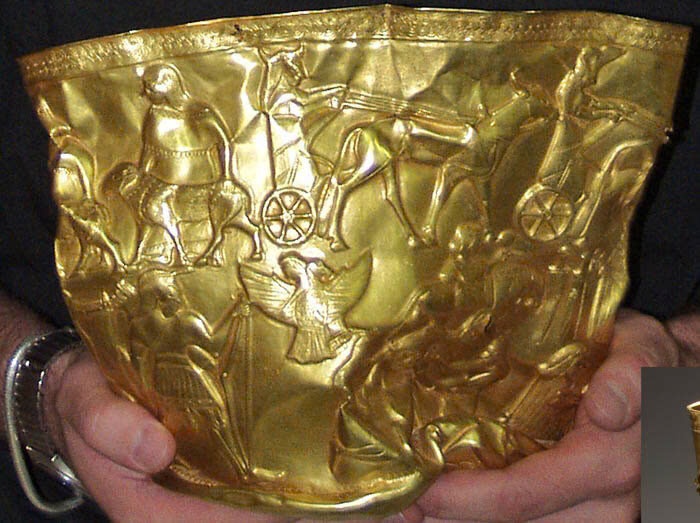The Ancient City of Hasanlu
A Glimpse into the Past

Nestled in the Qadar River valley of northwestern Iran lies Hasanlu Teppe, once a thriving settlement that dominated the Solduz plain. This ancient city, also known as Teppe Hasanlu or Tappeh Hassanlou, stands as a silent witness to a bygone era, its ruins holding secrets that continue to intrigue archaeologists and historians alike.
The Fateful Day in 800 BC
In the year 800 BC, Hasanlu met a tragic fate. The city was violently looted and burned, leaving behind a scene of destruction that would remain frozen in time for nearly three millennia. It wasn’t until modern archaeologists began their excavations that the full extent of this catastrophe came to light.
The Gold Bowl: A Masterpiece Amidst Ruins
An Unexpected Discovery

Among the debris and ashes of Hasanlu’s fall, archaeologists made a remarkable discovery in 1958 – the now-famous Gold Bowl of Hasanlu. Found in the ruins of Burned Building I West on the Citadel Mound, this artifact would soon become one of the most significant and puzzling finds of its time.
A Testament to Ancient Craftsmanship

The Gold Bowl of Hasanlu is a marvel of ancient goldsmithing. Weighing just over 33 ounces and standing about 20 cm tall, its intricate designs were created using repousse work and chasing techniques. The bowl’s surface is adorned with engravings depicting gods and rituals, offering a tantalizing glimpse into the religious and mythological beliefs of its creators.
Mysteries Surrounding the Bowl
The Unknown Civilization

Despite the bowl’s remarkable craftsmanship and historical significance, the identity of its creators remains a mystery. No written documents have been found at Hasanlu to shed light on the inhabitants’ identities or the name of their civilization. This lack of information has led to ongoing debates and speculation among scholars.
The Final Moments
The circumstances surrounding the bowl’s discovery paint a vivid and tragic picture. It was found alongside the remains of three men, presumably soldiers, who had fallen victim to the city’s destruction. One man was still clutching the bowl, suggesting they were in the act of plundering the wealthy complex as it burned around them.
Legacy and Preservation

Today, the Gold Bowl of Hasanlu rests in the National Museum of Iran in Tehran, a testament to the skill of ancient craftsmen and a window into a mysterious past. While many questions about its origins and the civilization that created it remain unanswered, the bowl continues to captivate researchers and visitors alike, serving as a poignant reminder of the rich, yet often enigmatic, history of the ancient world.
